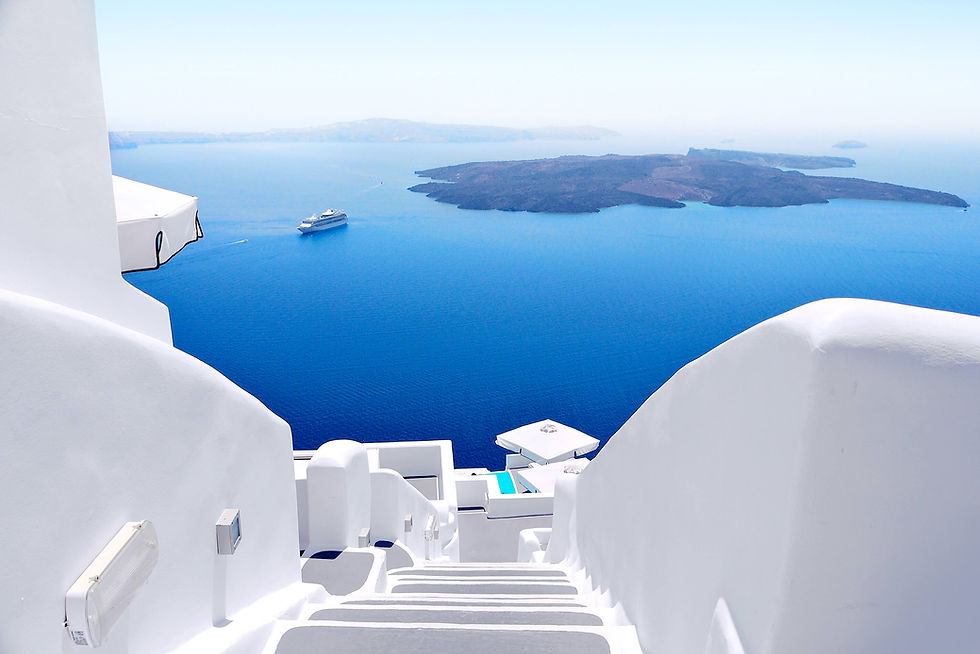Oceans need oxygen and humans do too. Humans also need the oceans as a source of food, and as part of the water cycle, and as a producer of oxygen. Ocean plankton include plant like microorganisms and larger seaweeds and sea grasses which use CO2 and release oxygen. They help protect the atmosphere by removing much of the increasing levels of carbon dioxide (CO2) however the capacity of the oceans to continue removing CO2 depends on the life forms remaining in balance with each other. Increasing temperature and increasing acidity levels from dissolved CO2 that hasn't been used by the plankton or seaplants can make the ocean environment inhabitable for species that survive only within a certain temperature or acidity level.

The oceans have a problem - people.
Increasing amounts of nutrient rich run-off from agriculture or untreated sewage is leading to algae overgrowth, which then dies off when the nutrients are used up, and the dead algae cause an increase in growth of decomposition bacteria that use up the available oxygen - which then leaves no oxygen in the area for other fish or aquatic mammals such as dolphins and whales.
Imagine the oceans as giant fish tanks.
Fish tanks need oxygen, food, and waste removal:
air bubblers with tubing and a pump.
fish food added by humans
waste removal by humans cleaning the fish tank regularly or by including fish or snails that eat algae and other decomposing waste.
Life on Earth depends on ocean health - if we want to continue with business as usual, then we need to protect life in the oceans.
We need to start acting like the planet and ocean are our home - because it is - we are part of the fish in the larger fish tank of the whole planet. (To be continued - with an idea for aerating the oceans).
The series: 1. Oceans need oxygen, 2. Oxygenating the ocean's dead zone, 3. Non-traditional windmills can increase efficiency, 4. Upwelling tubes, hurricanes, and mussels. 5. Baking Soda to the rescue! - Yes really. 6. Supplementing the Ocean, 7. Mussels - Delicious and Sustainable. 8. The big picture of climate change is bigger than businesses may consider. 9. Inventions Occur in Stages. 10. Stacked Horizontal Turbines.
The series in one document, minimal images, on Google-docs: (Oxygenating the Ocean).
References for more information:
A New Study About the World’s Worst Mass Extinction Should Make You Very Nervous for Our Future, Jackie Flynn Mogensen, Dec 6, 2018, Mother Jones, https://www.motherjones.com/environment/2018/12/study-the-great-dying-global-warming-reveals-climate-future/
Communities of purple sulfur bacteria in a Baltic Sea coastal lagoon analyzed by puf LM gene libraries and the impact of temperature and NaCl concentration in experimental enrichment cultures. Tank M, Blumel M, Imhoff JF, FEMS Microbiol Ecol. 2011 Dec;78(3):428-38. https://www.ncbi.nlm.nih.gov/pubmed/22066777
Oxygen depletion in the Baltic Sea is ten times worse than a century ago, Aarhus University, March 31, 2014, Science Daily, https://www.sciencedaily.com/releases/2014/03/140331153616.htm
The Baltic Sea as a time machine for the future coastal ocean, Thorsten B. H. Reusch et al., Science Advances 09 May 2018: Vol. 4, no. 5, eaar8195, http://advances.sciencemag.org/content/4/5/eaar8195
This Little-Known Sea Is a Grim Preview of What Global Warming Will Do to Oceans, Luisa Beck, Washington Post, Dec. 3, 2018, reposted by Science Alert, https://www.sciencealert.com/insane-baltic-sea-warming-is-a-sign-of-things-to-come
UN agrees to nine marine ecologically significant areas in the Baltic Sea, Nov. 30, 2018, Port News, http://en.portnews.ru/news/268613/
Building Capacity for Natural Ecosystem Assessment, Convention on Biological Diversity, CBD/COP/14/INF/28, 9 Nov. 2018 https://www.cbd.int/doc/c/df6e/7f7b/9566e08f75b126e85fd13f8c/cop-14-inf-28-en.pdf
Developing Indicators for the Post-2020 Global Biodiversity Framework: Lessons from the Biodiversity Indicators Partnership, Convention on Biological Diversity, CBD/COP/14/INF/40, 12 Nov. 2018 https://www.cbd.int/doc/c/7217/00d0/a9328110a490b7a8957a0cd9/cop-14-inf-40-en.pdf
Safeguarding Space (terrestrial water and marine preserves) for Nature and Securing Our Future: Developing a Post-2020 Strategy, Convention on Biological Diversity, CBD/COP/14/INF/25,1 Nov. 2018, https://www.cbd.int/doc/c/82c6/858d/3d0ba112897e7688df893ce4/cop-14-inf-25-en.pdf
Madigan, Michael & Jung, Deborah. (2008). An Overview of Purple Bacteria: Systematics, Physiology, and Habitats. 10.1007/978-1-4020-8815-5_1. https://www.researchgate.net/publication/226476437_An_Overview_of_Purple_Bacteria_Systematics_Physiology_and_Habitats
Ancient Rocks Hold Evidence for Life Before Oxygen, University of Cincinnati, Nov. 29, 2016, Science Daily, https://www.sciencedaily.com/releases/2016/11/161129144840.htm







Comments